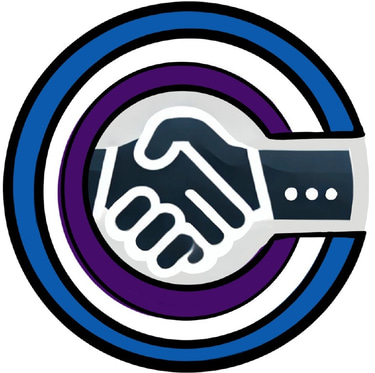Meeting with a Pediatric Emergency Medicine Physician
Picking a path in healthcare isn't straightforward, but exciting! #Northwell #CohensChildrensHospital #PediatricEmergencyMedicinePhysician #WashU
Elina Kamensky
11/19/20254 min read


Our discussion with Dr. Alison Cooper proved that there is no single “perfect” path into medicine. Currently she is a Pediatric Emergency Medicine physician at Northwell’s Cohen Children’s Medical Center, but that was not her original plan at all. She went to Washington University in St. Louis thinking she would become an occupational therapist and even started down that path. Everything changed when she began volunteering at St. Louis Children’s Hospital, rotating through different departments and slowly realizing that she was more drawn to the role of the doctor. She always knew she wanted to work with kids, but medicine came into focus later, through real life exposure, mentors, and experiences.
The quote I loved:
“If you are going to spend your whole career doing something, you want it to be something that makes you want to show up every day.”
Actionable insights:
You do not need to know in high school that you want to be a doctor
Dr. Cooper only decided on medical school after starting college.
In high school she just knew she wanted to work with kids and considered teaching, occupational therapy, and other child centered careers.
Volunteering and shadowing can completely change your direction
She volunteered in multiple departments at a children’s hospital in college, including occupational therapy, oncology, and the neonatal intensive care unit.
Being in the hospital environment and seeing doctors work with patients is what pushed her from OT toward medicine.
Your college major does not have to be biology to go to med school
She majored in psychology because she found it interesting.
She minored in Spanish, which is now extremely useful when talking to patients and families who speak Spanish.
As long as you complete the required science courses (biology, chemistry, physics, etc.), you can major in something you genuinely enjoy.
You can decide on your specialty later in the process
In medical school, you spend the first two years mostly in classrooms, taking courses like anatomy and biology and doing a lot of exams.
In the third year, you rotate through different specialties like surgery, internal medicine, pediatrics, OB GYN, and more. That is where she realized pediatrics was the best fit.
Even within pediatrics, she did not decide on pediatric emergency medicine until late in residency. You choose your main field first, then narrow down.
Pediatric Emergency Medicine has unique rewards and challenges
Rewarding: helping sick kids get better, comforting them and their families during stressful times, and working with patients who are often funny, adorable, and resilient.
Challenging: anxious or upset parents, toddlers with stranger anxiety who scream the whole exam, and emotionally heavy cases where kids are very sick.
Emotional fit matters just as much as academic ability
She once considered pediatric oncology but realized she would get too emotionally attached to her patients with cancer.
She chose emergency medicine because it allowed her to care for kids in intense situations without becoming overwhelmed in a way that would affect her life outside of work.
The lifestyle of emergency medicine can be a good match for family life
She works in shifts of about 8 to 9 hours, sometimes 10.
Typical shifts include 7 am to 4 pm, 8 am to 5 pm, 9 am to 6 pm, evening shifts like 5 pm to 1 am or 6 pm to 2 am, and overnight shifts from midnight to morning.
When her shift is over, she is truly off, which means she can spend more time at home with her own kids.
Night shifts are tough and can mess up your sleep schedule, but some doctors like them and do mostly overnight work.
A typical day in the pediatric ER is very team based and fast paced
She starts by rounding with the doctor and residents from the previous shift to hear about all the current patients and plans.
Residents usually see new patients first, then present to her. She then checks on them herself and finalizes the plan.
She continually “runs the board” by reviewing all the patients in her 12 or so rooms to make sure nothing is missed.
Nurses, social workers, residents, and students all play a big role in patient care.
Training is long and demanding, but there is a lot of support
Medical school is four years, followed by residency in your chosen field and possibly additional fellowship.
You do give up some free time. She remembers missing some social events because she had to study while her friends were out.
At the same time, she formed strong study groups and friendships in med school, and there is a sense of “we are all in this together.”
The MCAT and premed path are tough but survivable
She took the MCAT twice and used a commercial prep course the second time, which helped her score higher.
Studying for the MCAT on top of college courses is stressful, but it is doable with planning and persistence.
Final thoughts:
Dr. Alison Cooper’s story shows that if you are interested in working with kids or going into medicine, you do not have to have it all figured out right now. Focus on exploring, volunteering, paying attention to what energizes you, and being honest about what you can handle emotionally. In the end, the best specialty is not the one that sounds most impressive, but the one that makes you excited to walk into work and take care of people day after day.
